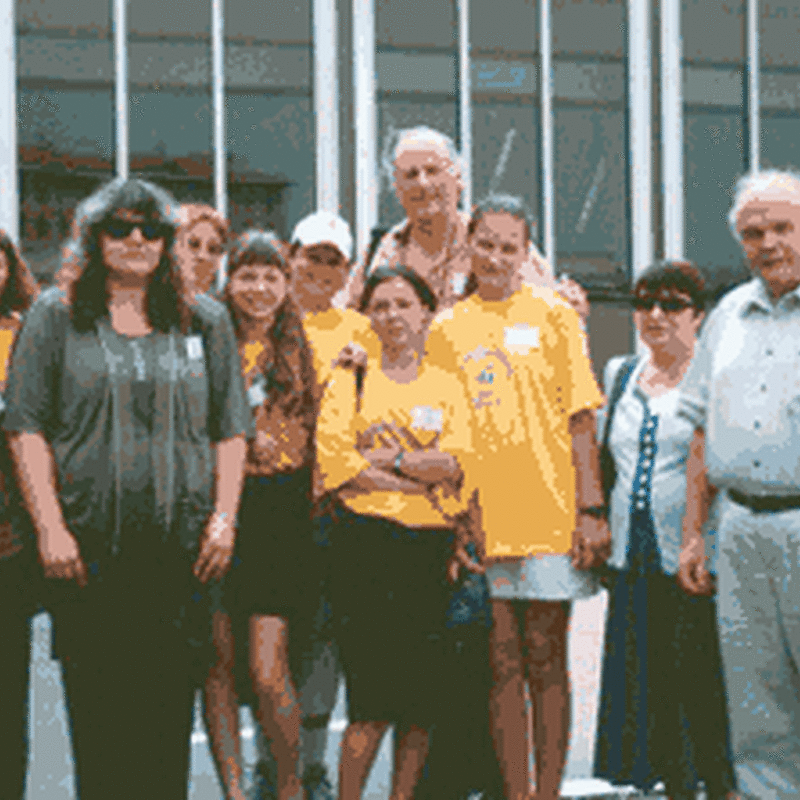Laws of Life Project: How to Make the World a Better Place
Posted on June 02, 2011
Since 1997, I've been coordinating Internet-projects for Lyceum # 130. Laws of Life is one of the ongoing projects which we do every year as part of our collaborative work with IEARN. I made it an integral part of the standard school curriculum, created a demonstration site with the help of students and our technical support group, and I also publish an annual booklet of students works.
2004-2005 academic year presented us with good opportunities for extension and innovation while working on the same topics. The Teachers Gazette, an educational national Russian weekly newspaper, announced a contest for the Best Lesson of Letter Writing. Students were to choose a topic, and teachers were to submit a description of the whole process, so that others could use the same steps later. I told my students about the contest and we started our work.
Step 1. Choosing the topic and identifying the problems which worry teenagers today.
Students made a list:
- Teen health. The dangers of drugs, alcohol and smoking.
- Mothers work too much. Lack of communication in the family.
- Peer pressure and bullying at school.
- Wars, terrorism, environmental problems in the world.
Any adult will see that the world at large does not occupy the first place in the list. The teacher must explain to the students that there are no restrictions as to the content of their writing, everybody can write about any problem. Those who do not wish to take part in this project can simply do their usual writing exercise. Predictably, 100% of students took part in the discussions and writing, though some of them preferred to work in groups, rather than individually. I allotted bi-weekly lessons devoted to discussions and writing through the third and fourth terms, that is the second half of the school year, January - May.
Step 2. Students brought their letters, both in English and in Russian, into class.
We had reading aloud, discussions, listing of ideas. At the same time, the students asked questions connected with the language, so we had grammar revision, too.
Our curriculum included the following oral topics: Family; Life Values; Education; Computers; Environmental Problems; My Future. There were ample opportunities for working out some answers to the main question, How to make the world a better place.
Conditional sentences, a grammar theme which is considered to be one of the most difficult for Russian students, was absorbed during the discussion as a good model for writing about things they would love to change if they could.
Step 3. Choosing the best letters:
The best letters were chosen according to the following criteria:
- Answering the main question;
- Literacy;
- Ability to argue ones point of view.
The teacher can continue working with those students who are interested, and who wish to write more. A special lesson is dedicated to the final translation of all letters into English, and to typing them on computers at school.
Step 4. Extension
At our discussion lessons, students kept asking me if we could find an opportunity to discuss our ideas with teenagers from other countries. It is quite possible today, if one uses the Internet as an integral part of the school curriculum. Many teachers in the world do it. First I contacted my longtime friend Violeta Tsoneva, a Bulgarian teacher who was spending this academic year in Arizona. Violeta is a seasoned IEARNer, so I didn't have to explain much to her, nor she to me. Violeta and her colleague Bill Kleinman from Hamilton High School in Chandler, Arizona told their students that they could take part in Laws of Life project together with students from Siberia. We exchanged some writings, compared ideas, wrote responses by e-mail.
Matt Penn, a teacher from Bishop McLaughlin School in Silver Spring, Florida, first found our school and myself via the Internet. We helped our students arrange an e-mail exchange, then I suggested that our new friends take part in the same project. I e-mailed my students writings to Matt Penn, and he sent his students writings to me. Again, all of us got a chance to compare our ideas and wishes.
For all of us, this stage was really a huge inter-cultural experience. We discovered that young people who live oceans apart have similar ideas, likes and dislikes, worries and wishes. Our students learned that it is possible to understand each other, and to become friends with the help of technology.
Step 5. Consolidation
This kind of collaborative effort proved to be beneficial for adults and children alike. American students learned that there is civilization in Siberia, and that Russian teenagers know English and can use modern technology. Siberian students were greatly impressed by the length of the American letters, and by the depth of their ideas. I told my students, who were all a couple of years younger than our foreign friends, that they have very good chances of becoming as literate and innovative as their US partners in the two final years of school.
We teachers worked at the methodology of such lessons. One cannot introduce such a serious topic suddenly; nor should students be left to fulfill such a complicated written task by themselves, without prior discussion. While working at a lesson, students gradually realized several very important things:
- Overcome the barrier inside yourself;
- Begin the changes by doing something good near your home, even if it's such a simple thing as Do Not Litter (outside), or Do Not Yell at Mom (inside).
Step 6: Next steps
We put one of the Florida letters on our site, Projects, Laws of Life. We decided it's time to renew the site, to add some new essays. While working with my students and our US partners, I continued the work we do every school year with a German school. They expressed interest in joining our project, so we may add some German writings on site. A Japanese teacher e-mailed me recently: she is using ìPowwow. English Course 1î, a textbook published by Bun-Eido publishers in Tokyo, Japan, in 2003. There is a chapter in it about our school and me. When I e-mailed a reply, her students were very excited to get a letter from a Siberian teacher whose picture they found in their textbook. They sent us messages about their school, town, and their ideas about the world and the future.
Through the summer, I put together all the letters that students wrote and publish a booklet, which will be sent to every participating school, and to iEARN.
Conclusions:
Children should be taught how to think. They are able to learn lots of facts and rattle them off, or write a test on a subject. But sometimes, it is quite difficult to help them see the problems around them, and the ways to solve them. A teacher should encourage students to express their ideas on any topic that is part of the curriculum. They should feel that they are part of this world, and so it is up to them to change the world.
Modern technology offers unheard of means of communication, finding the necessary information, making ICT part of the school curriculum. Today's children are always ready to push buttons and click. It is up to the teacher to help them see technology not as a toy, but as an instrument.
Student response. It is a truth universally acknowledged that students dislike writing. While working on this project within the framework of our regular curriculum, they received extra motivation, in the form of communication with students from other countries. Instead of composing ìA letter to an imaginary friendî, as the task is formulated in their textbooks, they wrote to actual people, other students. They learned to see their own surroundings in a new light, When reading and discussing messages from the USA, they discovered that other people have the same problems, the same values. I would like to give just one illustration. In one of my four classes, there's a newcomer. I noticed when she appeared that none of my students would sit with her, nor would they agree to do pair work, in fact, they acted as if she was not there at all. I watched the situation, gradually working out the ways and means to overcome it, to help this girl. For example, when I asked a question and several hands rose, I always asked her first. She had very good ideas and offers which made others listen attentively. Then we read a letter from the US, which told us about school "cliques" and various problems in class communication. "So they have it, too!" my students said. By the end of the year, I could see that all our discussions helped my teenagers realize that this girl was part of the class, even though she seemed very different at first.
My slogan for Internet-projects: TO BE DIFFERENT DOES NOT MEAN TO BE BAD.
My usual greeting to a new class: YOU ARE MY NEW WONDERFUL STUDENTS, AND I AM YOUR NEW WONDERFUL TEACHER.

